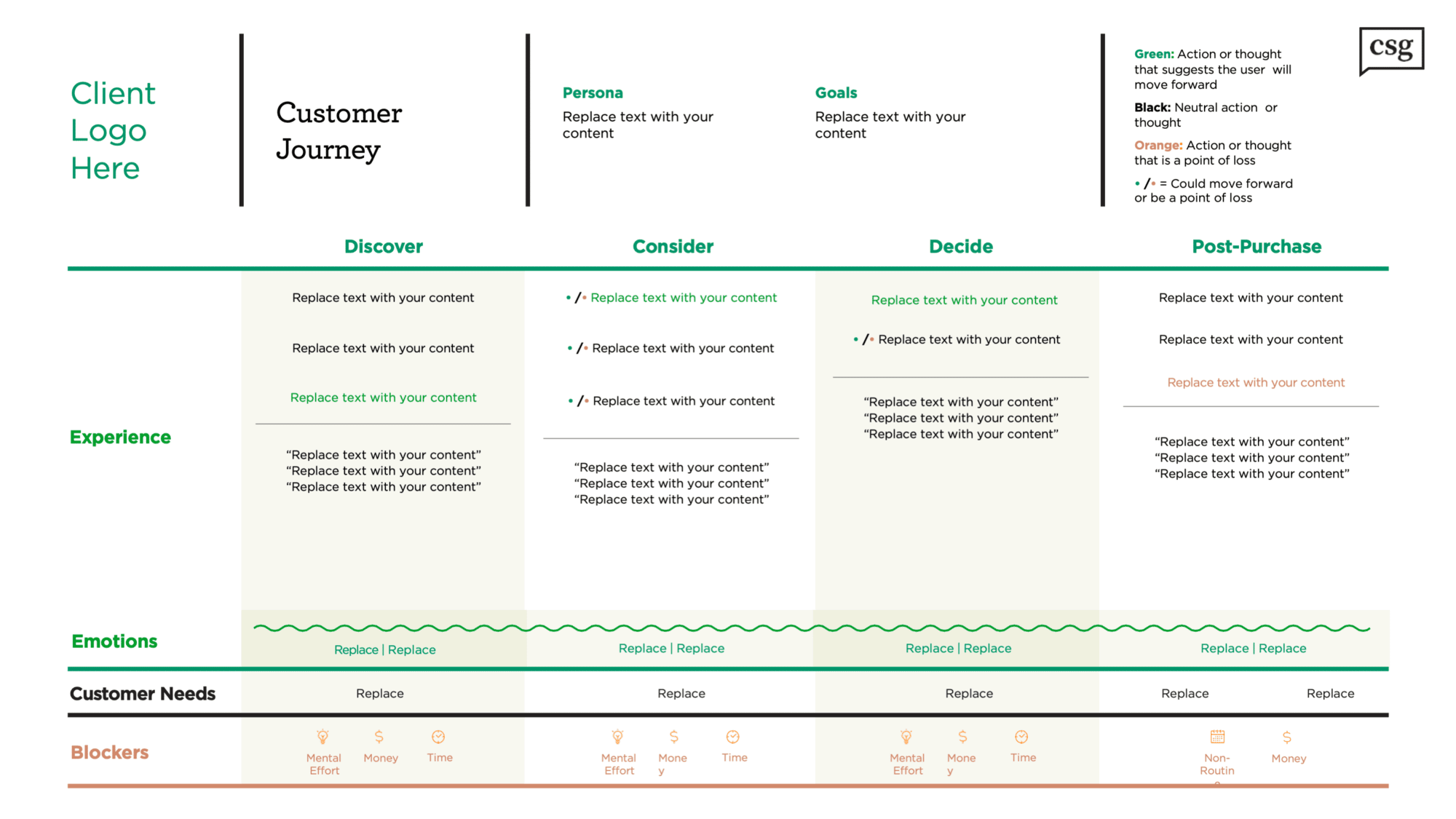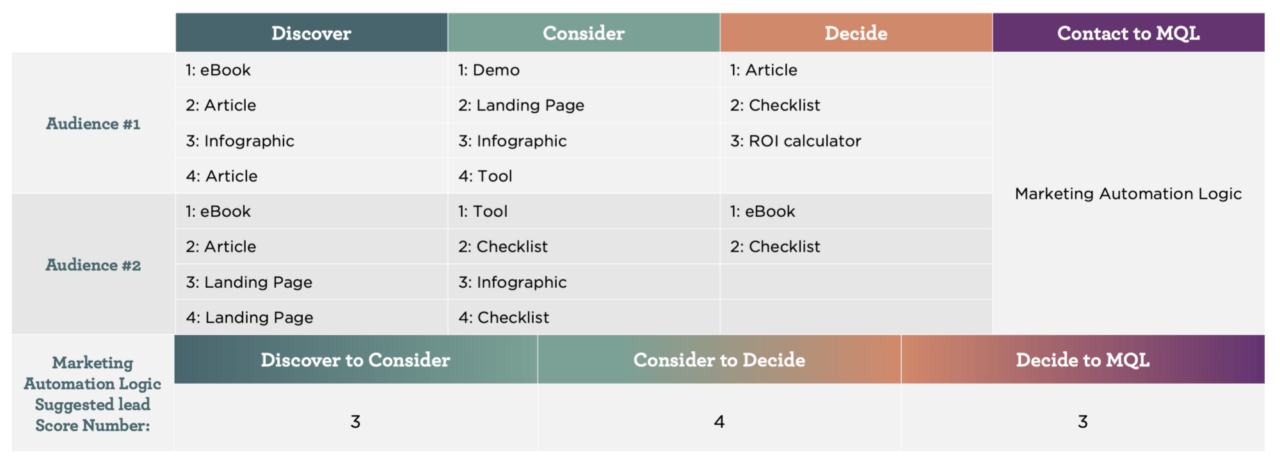If you have a business, it’s likely you’ve had a reason recently to ask yourself, what is content marketing? The term is everywhere these days, as other marketing strategies wane in power and the demand for digital content grows. That’s a big question, but we’re happy to say that you’re asking in the right place. At Communications Strategy Group (CSG®), we know firsthand the power that an organized, ROI-driven content marketing strategy can have. Consider this a hub for all the answers you’ll ever need. Here we’ll tell you what content marketing is all about, and provide links to other resources (like our ultimate guide) that can help keep your company on the right path for attracting new business leads and engaging with customers with a focused, insightful content strategy that generates tangible business results.
Marketing in the Digital Age
It doesn’t look like the digital transformation of our lives will be going backward any time soon. And the change has had a profound impact on every facet of human activity, including the way businesses operate and how we define content marketing. With information multiplying on the internet so fast we can barely keep up, people have adapted in the ways they search for, evaluate, use and communicate about products and services. This means new demands, new opportunities and new risks for companies trying to make their way in the digital universe.
By necessity, people sort information they encounter faster now. They reject what is unhelpful, unreliable, inauthentic or unentertaining without hesitation. Even information they want cannot hold their attention as long as it might have in times past, simply because there’s always more coming down the pipe. The typical daily online experience involves an endless stream of data to sort and to consume. This phenomenon is what content marketing is all about.
In terms of marketing strategy, the modern overabundance of information has driven a shift away from traditional advertising. Whereas before, companies might happily pour most of their marketing budget into promoting their products under their own name within third-party content, this seems to be a less and less viable approach.
Why Traditional Ads Aren’t Enough
Where are the captive audiences of today? If you find out, tell us. Buried in options for content, not to mention options for skirting ads, the modern web user seems to have no reason to stick around when they run into something that doesn’t tickle their fancy. In a flash they’re off to another site, another video, another tab on their browser.
So, sure, you can pay to make your ad an accessory to third-party content, and you will attract views and see some engagement (and please note, we are not advocating that companies abandon traditional ads altogether). But is that engagement always cost-effective, or robust enough to support your company’s marketing goals on its own? In the old days you at least got to make an elevator pitch. Now, the vast majority of people are going to sort your ad into the “Nope Nope Nope” pile before you even get that far.
Also, modern consumers are jaded. They’re familiar with marketing techniques, they’ve been awash in traditional ads their entire life, and they have developed a certain cynicism about those ads that you don’t want to activate. Authenticity has become the currency of the moment. You’re likely to get better results telling people in direct, unexaggerated terms about the strengths and values of your company. Content marketing shines for this purpose.
Content Marketing to the Rescue
Perhaps the best answer companies have devised to meet this new challenge is content marketing. What is content marketing? It’s a neat little bit of marketing judo. Instead of meeting consumers head-on, digging in your heels and trying to force them to behave the way they did in the past, you roll with their momentum. You give them exactly what they want, i.e., content that satisfies their impulses in the moment. But, within that content, you give your company enough visibility that some of the audience find themselves redirected to your down-funnel offerings, almost without their realizing it. This can be a way to achieve engagement, leads and conversions often at a lower cost per aquisition than with other approaches.
Sounds great, right? But hold on a minute. Knowing the basic meaning of content marketing is only the beginning. Before you can run off and start churning out content for your business, there’s a lot more to learn, and also some steps you should take in preparation for launching your shiny, new content campaigns.
The Top Benefits of Content Marketing
What is content marketing’s main strength? It allows you to reap multiple benefits in multiple directions at once. And when it comes to our client solutions, we’re all about getting big returns on modest investments. These are just some of the advantages your company can enjoy from sound content marketing:
1. Telling Your Company’s Story
You can use your content to tell your company’s story, in a way that helps people get to know you and persuades them that your values line up with theirs. It also helps bolster the perception that you have authority and special expertise to offer in your sector. Make sure to keep the importance of your company’s story in mind when defining content marketing for your company.
2. Building Better Relationships with Your Customers
Brand awareness and brand association are important. And what is content marketing if not a vehicle for raising awareness and forming positive associations? You stand to gain a lot by making regular content releases part of a long-term strategy to build trust and emotional connections with your customers, clients, vendors, and B2B partners. The material you publish is a huge part of your personality as a company, and once people like and trust you, they’re much more likely to look favorably on whatever bids for engagement you make.
3. Diversifying Your Campaigns
Without content marketing, your marketing strategy is one-dimensional, fragile, unadaptable to many situations. What are you going to do if your traditional paid ad campaign doesn’t take off the way you want, when it’s the only part of your plan? Having another prong in your campaign gives it more resilience against unexpected mishaps or sluggishness.
4. Turning Leads into Conversions
About half of your possible customers want to read at least 3-5 pieces of content before they make a deal with you. You don’t want to leave this much of your market in the dark without the information they’re seeking. Show them who you are with instructive, entertaining, valuable content, and you’re likely to see your conversion rate improve.
5. Showcasing Your Successes
Content like customer reviews and social media influencer testimonials can be big for social proof and building trust. Including these forms of content within your content marketing definition can allow for a lot of neat tactical maneuvers. Why brag about your own product or service when you can let someone else, who may have a following that overlaps with your target audiences, do it for you? Content marketing provides the stage for people to chime in about their positive experiences with your company.
6. Improving Your SEO Ranking
Google is king. Where you show up in search rankings has 1000% more impact on web traffic on your site than the actual material you’re publishing on social media. Releasing varied content full of keywords that match users’ queries tells search engines that your pages are thriving, helpful and worthy of users’ attention.
7. Earning Backlinks
High-quality content is likely to earn nods from other online content creators. If they cite an article or infographic you’ve created, it improves your SEO performance and tells people you’re an authority in your space. What content marketing is all about is allowing the value of the content you put out to build a foundation for more direct targeting, and backlinks are good for this in several ways at once.
8. Making Your Website Better
If you’re in search of a product or service online, and you find a website for what you need, but it’s bare and unexciting, how much are you going to trust the company behind it? Probably not much.
What is content marketing? It’s the answer to this problem. If you’re producing content as part of a campaign, you’ll have material coming out regularly to use to make your site look polished and trustworthy. That will get people to spend more time on your site, explore more of your pages, and move further toward a sale. This in turn improves SEO performance and drives organic traffic.
9. Personalized Experience
Personalization is a key factor in consumer behavior. The more you can tailor what you’re putting on display to the needs of the audience, the more likely people will be to make the purchasing decision you want. Content marketing allows you to segment your offerings more precisely than other forms of marketing. You can develop content for every group and subgroup in your principal audiences, and even within those divisions there is room for further targeting.
The same person at a different point in the business funnel has different needs. Maybe in the beginning they need information or education, but later, once they’re familiar with your company and what it does, they want resources for further research, or social proof for assurance about the purchase they’re considering. Content marketing allows you to provide the right information at the right time, anticipating people’s needs from the start of the customer journey to the end.
10. Behavior Design
Part of the research Stanford’s Behavior Design Lab has done is identifying the conditions that have to be in place for people to act. Those conditions are motivation, ability, and prompting. When any of these is deficient, action will not occur. Behavior design is the half-art, half-science of bringing those conditions together in the right proportion, and content marketing can give customers all three at once, making it a powerful tool for influencing decisions and driving favorable business outcomes.
One aspect of CSG’s work is strategic thinking around how we can apply behavior design principles to our clients’ content campaigns, in order to get them the best results with the least input possible.

In What Contexts Is Content Marketing Useful?
The definition of content marketing has grown a lot over the years to include new forms of content that have become popular. The good news is that this means content marketing can be applied to more and more industries and business models. Here are just some of the spaces where the expanded meaning of content marketing applies:
B2B
B2B content marketing is an important area to target. B2C sales can be sporadic, you probably need a lot of them to keep the lights on. B2C sales, on the other hand, can be very large and often come with a contract guarantee of future sales. B2B buyers monitor your content as closely as individual consumers, so you can definitely tailor your content to catch a piece of this market. Try to anticipate your clients’ questions and concerns as part of the videos, blog posts, case studies and other items you put out. Ask yourself what you would look for in a B2B partner, and then emphasize those qualities in your content.
Real Estate
As you gain a deeper understanding of what content marketing is and when it can help you you’ll see more and more opportunities to use it. Take real estate, for example. If you’re a real estate company, you probably see people asking the same questions over and over: What’s an appraisal gap? How much does my credit score affect my interest rate? When is the best time to buy a house? Use this information to compile a list of topics you can address in your content marketing campaigns. Then, you can start drafting content and push it out.
Healthcare
Content marketing and healthcare go together well because people often turn to the internet with medical questions. Google is usually the first place people go when they are curious about a medical procedure, pharmaceuticals they’ve been prescribed, symptoms they’re having, etc. They want information they can trust, they want it right away, and they’ll read through multiple pages of content before feeling like they have a handle on their issue. What is content marketing if not an excellent way to take advantage of that phenomenon? This wealth of organic search traffic can all be put to use for your company, improving SEO performance, bolstering your thought leadership, earning backlinks and promoting conversions. As a bonus, because medicine is broken into so many specialties, there may be less competition for keywords than in other industries, meaning that your content can rank higher, faster.
Startup Businesses
The meaning of content marketing is to connect with people using information they find valuable. And the great news about that is, anyone can do it — you don’t have to be a huge corporation with an established grip on the market . Putting out entertaining or helpful content can be done today, often with less of an investment up front than other forms of marketing require. And that’s why content marketing for startup businesses is often successful. Whereas other methods might involve extensive planning and a lot of money just to get started, this often isn’t the case with content marketing. What’s stopping you from giving your startup company a blog, an email newsletter, or an Instagram account?
eCommerce Brands
If you’re an eCommerce brand, you cannot ignore the power of content marketing. Emails, social media posts, blogs and other content may help you improve your conversion rate — some data suggests the boost may be around 600%! A content strategy for eCommerce brands is worthwhile if not essential in today’s competitive market.
How to Prepare for Your Content Marketing Campaign
As you prepare to answer the question of what content marketing means for your company, there are concepts to solidify, decisions to make and intentions to set. What voice are you trying to give your company in your content? What types of content will you prioritize? Who will you speak to, and what will you show them at different stages of the customer journey? What metrics will you use to figure out how the campaign is going and whether adjustments are needed? Here are the things to think about before you launch your content campaigns for real:
Do Your Persona Homework
Thorough content marketing solutions go way beyond the actual words or images on the screen. There are many ways you can use to figure out your company’s message, personality, core values, and optimal audience before you ever begin creating content. Content calendars, archetyping, brand guides and personas can all help you achieve this sort of brand alignment.
A persona, for example, is a set of characteristics that members of your target audience share. These characteristics are the bedrock of their motivation for seeking your product or service. Spending time to identify these markers in your audience will help you understand them better. Understanding them means you can anticipate their questions, concerns, pain points, and emotional reactions to content you publish. That in turn allows you to engage in remarkably effective marketing, reaching the right audiences, with the right message, at the right time.
Map the Customer Journey
The process in which a person goes from first encountering or seeking out information about a product or service to buying it is known as the customer journey. CSG has analyzed that process down to an atomic level for businesses over and over, and making a similar effort for your company will allow you to create more persuasive, more cost-effective content later.
Put yourself in the mind of your customers: how do they come across your content? Is it incidental to other online activity, or by searching directly? What are their initial emotional responses to what they see from you? What motivations do they have to browse further content? What are their emotional responses to that content? The more insightfully you can break apart the customer journey into its component stages, the better you will be able to generate content that keeps leads moving down-funnel.

Here’s what a blank customer journey map might look like for one of our clients:
Nurture Mapping Is Good Too!
Reaching the right audience with the right message at the right time is tricky. That’s why we recommend you do some nurture mapping for your content marketing strategy as well. You don’t just want to attract leads fleetingly, you want them to stick around. Certain kinds of content nurture this behavior better than others depending where people are in the customer journey. The analysis of this phenomenon is known as nurture mapping, another of CSG’s mainstays for our clients.

Figuring out which prongs of your content array are best for each stage of the customer journey allows you to lay out an ideal flow of information for leads to encounter. Then you can steer different segments of your audience to different content, nurturing their interest in your company in the early going, the middle stages, and as the time for purchase decisions approaches. When you get finished, you’ll have something that looks like this:
Figure Out What Types of Content to Use
Over and over with clients, we have seen how blog articles, social media posts, videos, testimonials, infographics and other content can bring about more organic traffic, improved SEO performance, more leads, and ultimately more business. We recommend a mult-dimensional approach in most cases, but any one of those forms of content can have a big impact on its own. That’s why custom solutions are a key element of our content marketing definition. Here are some of the best types of content to consider as you refine the content strategy for your business.
1. Video
The importance of video in the online world is rising. Internet users love it, search engine algorithms love it, and you should learn to love it too. Introducing yourself, your company and your products to viewers by video is a strategy you can’t afford to ignore in the modern content marketing landscape. Find a way to incorporate more video solutions in your content, such as with client testimonials or “About Us” videos, and it’ll pay off down the road.
2. Blog Articles
Doubt the power of a blog in content marketing? You shouldn’t — you’re reading one right now. Keyword-rich blog articles can be a great place to inform, entertain, and otherwise provide value to readers who may then go on to explore your other offerings. But remember, what is content marketing’s chief goal? To provide value. So don’t go overboard with keywords or feel like you have to churn out more content than your audience will appreciate. Keep a good balance of quality to quantity and keep your readers’ motivations in mind while drafting.
3. Testimonials and Reviews
As we mentioned already, testimonials and reviews are good places to let others do your selling for you. These forms of earned media are often seen by consumers as more trustworthy than other media, because brands do not control the information expressed. A five-star review from a disinterested third party can be as valuable as a paid ad, if not more, when you leverage it right.
4. Social Media
Social media can be an effective component of a content strategy. Take the work CSG did with Cochlear, for example. Prior to engaging us, Cochlear had an active social media presence, but lacked a cohesive strategy. After deep diving on Cochlear’s target audiences and reviewing what was working and what needed improvement, our healthcare team refined the brand’s approach and began new messaging. Ultimately, Facebook- and Twitter-driven leads on the company’s website increased 2500%. Organic social traffic is not easy to come by, but with a persistent, focused effort, which is what content marketing is all about, your company can see significant, sometimes astonishing, gains in this area.
Decide on Your Content Marketing KPIs
You’ll need to be able to track the performance of your content marketing campaign as it goes along. What is content marketing good for if you can’t even tell whether it’s working? Content KPIs (key performance indicators) are the way to accomplish this. There is no single set of KPIs that marketers use, and individual KPIs go in and out of fashion for no discernible reason, but there are several that are always in the running, and if you watch those, you’ll be on good footing with your content campaigns. Here are some of the most important KPIs to measure.
1. Page Views
The raw material of leads and conversions. This basic content KPI won’t tell you what people are doing once they find your content, but it tells you that the content is at least getting out to the right channels and having an effect on traffic on your website.
2. Leads
Tracking your leads tells you how successful your marketing array is at a given time pulling people into your business funnel. With this KPI you can identify patterns running through successful and unsuccessful pieces.
3. Time on Page/Scroll Depth
These content KPIs tell you what people are doing when they reach your content. Do they stay on for a while, reading through and scrolling to the bottom? Or do they run away immediately, which might suggest you need to make some changes?
4. Backlinks
As we mentioned, backlinks are a big part of content marketing. Watching this KPI gives you a sense how your content is viewed by other content creators, how it’s seen in terms of SEO, and it can help you track your authority in your sector.
5. Keyword Ranking
Speaking of SEO, you’ll want to keep track of keyword ranking too. This indicator can tell you how your content stacks up next to that of your competitors, and also which keywords might be best for your business to target.
6. Conversions
This is what content marketing’s all about in the end, right? You need to measure changes in the rate at which you turn leads into sales. Along with the other content marketing KPIs, this one will show you what happens to people as they approach the bottom of the funnel. If your content isn’t ultimately affecting the amount of business you do, you may need to tweak some things in your strategy.
The ROI on Content Marketing
A final thought: after you’ve been doing content marketing for a bit, you’ll no doubt become curious how your content is going in terms of dollars in and dollars out. Is there a way to find that information? Yes there is. The answer is ROI (return on investment) calculations. ROI formulas are the way you make sure your marketing campaigns are bringing in more revenue than it costs to launch them. As long as your content marketing ROI exceeds the investment amount, even by a little, you know your company is better off with its content strategy than it would be without one. Although changes may be made that improve your ROI, once you’re in the positive, you can rest assured that you’re starting to see benefits from your hard work. And that’s something worth celebrating.
CSG’s content experts are ready to take your business’s marketing as far as you dream it can go. Get in touch with us to start planning your next content campaign.


